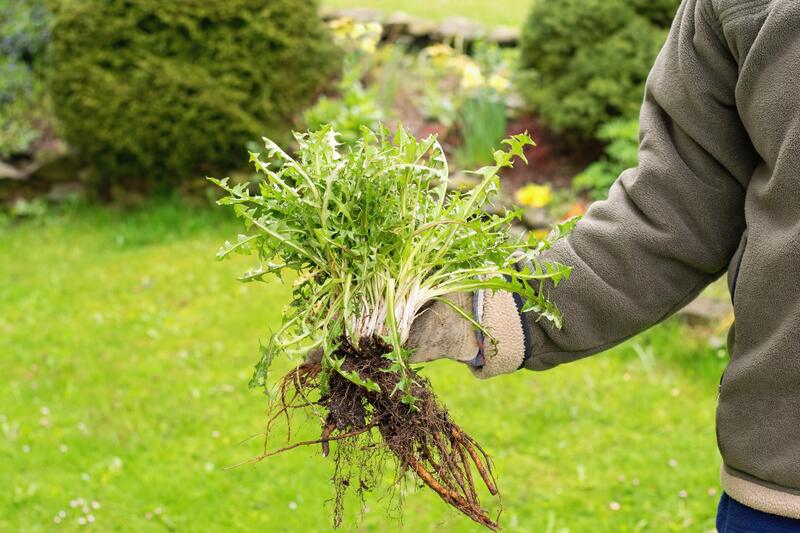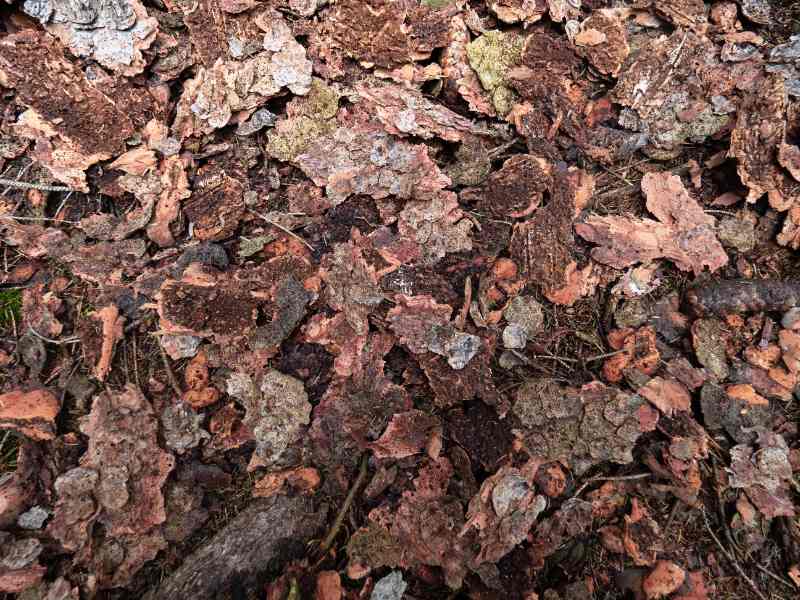
Discoloration, thinning out, diseases, and excessive weeds are important signs that you need to replace your mulch. Pests issues and fungal growth also indicate it’s time for a refresh.
1. Faded or Discolored Mulch
Discoloring is a clear sign that it’s time to get new mulch. Whether you have dyed mulch or not, over time, it will start to fade due to weather and sun exposure.
If your mulch is fading, it’s likely on its way out and struggling to protect your garden. As a last attempt to revive its color, turn it with a rake. If that doesn’t work, replace it to keep your garden beds looking their best.
See Related:
2. Excessive Weed Growth

The presence of lawn weeds is probably the most obvious sign that you should replace your mulch or change your mulching strategy. At the beginning of spring, check for any new growth you didn’t plant yourself last summer or fall. If weeds have made an unwelcome appearance, it’s time to do a spring refresh and add more (or a different type of) mulch.
If your current mulch isn’t doing its job, you can also try adding landscaping fabric underneath bark or rocks to prevent weeds from growing in your landscaping beds.
If it’s time for a refresh, use our Mulch Calculator to determine how much mulch you’ll need.
| If you need someone to help you pull those pesky weeds from your garden bed, contact a LawnStarter landscaping pro to help you out. Our customers spend around $96 for our flower bed weeding services and around $286 for mulching services. |
See Related:
- Landscape Fabric Types and How to Use Them
- How to Install Landscape Fabric (in 9 Easy Steps)
- 9 Alternatives to Landscape Fabric
3. Thin or Compacted Mulch
Thinning mulch: If you live in an area prone to extreme temperatures, heavy rainfall, and high humidity, your mulch may break down faster and visibly decrease in volume. As it decomposes, it provides nutrition for the soil, but this also means there is less mulch to combat weeds and protect your soil and plants.
If your mulch layer is getting too thin (under 2 inches for landscaping beds), add another layer to continue reaping the benefits.
Compacted mulch: If you notice your mulch is matted and sticking together, this might be due to compaction. Rake the mulch to improve airflow and spread it out into a thinner layer to prevent it from compressing.
Check out our guide on How to Mulch Your Yard for more information.
4. Fungal Growth or Mold

Your mulch pile may also become infested with diseases. These can include bacterial diseases, such as bacterial blight, and fungal diseases, such as powdery mildew, artillery fungus, and root rot.
Here’s what you can do to prevent or minimize this problem:
- Regularly turn and fluff your mulch to increase airflow.
- Stick with the recommended mulch depth for that space (landscaping bed, tree, or garden). You want the depth to be “just right” — not too deep or too shallow.
- Avoid overwatering to prevent high moisture levels.
- Try both organic and inorganic mulch in different beds around your landscape to compare results and create a more disease-resistant environment.
See Related:
5. Pest Infestations
Inspect your mulch pile periodically to check for pest infestations. Mulch piles create a humid and sheltered environment that attracts all kinds of critters: from snails and slugs to beetles and termites. Try cedar mulch or cypress mulch (which have insect-repelling properties) if you’re having problems with pests.
See Related: Types of Mulch for Your Landscape
6. Poor Plant Growth
Inorganic mulch may not be as effective for plant growth. Additionally, inorganic mulches made of black rubber or plastic can absorb heat and cause heat stress, impairing plant growth. If your plants are struggling, try organic mulches instead. Organic options will keep your soil cooler and add organic matter as they decompose, boosting plant growth and health.
FAQ
Most inorganic mulches should be replaced every 3 to 5 years, while organic mulches should be replaced every 1 to 2 years. See more details in our article: How Often Should You Replace Mulch?
You can add new mulch over old mulch, but remember to fluff it up before adding more. Unless the old mulch is matted, you don’t need to remove all the old mulch before adding new.
Early spring, after your spring plants are in the ground, is the best time of year to apply mulch.
When to Call a Professional
If you don’t know where to start, consider contacting one of our local landscaping pros to do the mulching for you. Get a free quote today to keep your flower beds healthy and strong without lifting a finger.
Main Photo Credit: A landscaper replaces mulch along a tree line. Tomasz Zajda / Adobe Stock